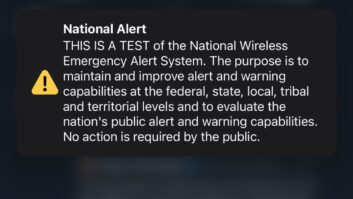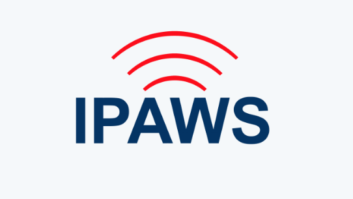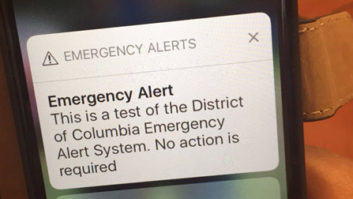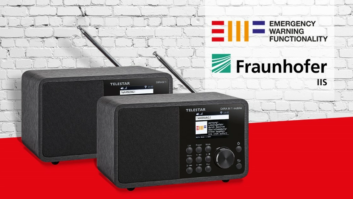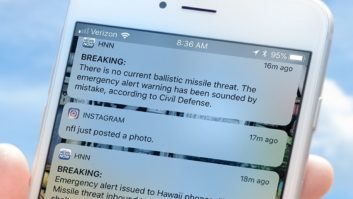
Richard Rudman is vice chair of the California EAS State Emergency Communications Committee and a core member of the Broadcast Warning Working Group. He knows EAS well from involvement in local, state and national emergency public information planning for more than 25 years. From 2000 to 2002 he served as the last chair of the FCC’s EAS National Advisory Committee.
He’s an important voice in the world of the Emergency Alerting System so I asked him his thoughts, given all that has transpired in recent months.
Richard, what should radio engineers be thinking and doing right now in regards to EAS?
First, everyone needs to check with the manufacturer of their new EAS equipment to make sure they have software updates installed that will be able to poll the IPAWS ATOM server by the June 2012 deadline.
After receiving comments on the liabilities of RSS feeds, FEMA listened and changed to ATOM feeds. When that happened, all manufacturers needed to implement a new operational selection for FEMA IPAWS ATOM. As of Dec. 13, not all manufacturers had released the required software to poll a CAP ATOM feed.

Richard Rudman
Second, broadcasters need to actively participate in updating their local EAS plans. I have always looked at LECCs as “committees of the whole” that have a few worker-bees who write and maintain what is needed for each locale. Everyone in every market should at least take an active interest in what the LECC will come up with.
Third, licensees in states without a clearly mapped-out CAP strategy need to work with their local broadcaster and cable associations so CAP implementation for local and state EAS can happen.
With the current economy, the best (and possibly highly provocative) question to ask state and local governments in discussions is, “What value do you place on warning people at risk so they might be able to take better protective actions to preserve lives and property?” Value equals money, time and effort invested by government into creating a viable warning origination plan.
Fourth, we need to find out if we want to cripple CAP EAS any longer than necessary by preserving legacy EAS SAME messaging.
If we really want to improve public warnings by taking full advantage of CAP messaging, we need to come up with a near-term transition strategy to retire legacy EAS SAME messaging. This is unfortunately an issue that broadcasters who bought add-on CAP devices for their legacy EAS equipment may not be happy with.
On the other side of the argument, some of us believe that allowing CAP converters to be built and offered for sale was a mistake. One thought: Considering the age of first-generation EAS SAME equipment, problems with their power supplies, printers, etc., purchasers of CAP converter devices may have just postponed the inevitable: purchase of a 100-percent CAP-capable box.
Fifth, we know we have a serious issue with cable override of on-air television stations during EAS events. Not all cable systems can do selective override. I would suggest our goal (including the FCC) should be to assure that EAS and follow-on emergency information broadcast by on-air stations is not interrupted, while also assuring that all EAS events come to the attention of cable viewers with “crawl” information that really tells viewers what is going on.
While I am aware that the cable industry is aware this is a problem and cable experts are working on it, the reality is that fixing this for all systems will have to wait for the next generation of head-end equipment and set-top boxes to be rolled out.
When the next generation of cable head end and set-top replacement equipment is available, I hope that CAP awareness can be built into the set-top converters so they will be true “warning appliances” apart from video monitors hooked to them. Where that to happen, set-top converters could store and forward EAS events, trigger alarms for the hearing and sight-impaired communities, and have the ability to be user-programmed to wake people up in the middle of the night.
What’s your assessment of the success of the national EAS test?
We do EAS tests to expose problems with the goal of fixing what’s broken and also making overall improvements to assure alerts and warnings will get through. Tests are tests. The only failed test in my opinion is a test that does not take place.
However, results of tests can be graded. From that point of view, the data-gathering portion national EAS test was a success since it gives us benchmark data for what is in place now that will help us improve in the future. The jury will have to remain out on the success of mitigation until we do another test. The next test will almost assuredly find other problems that will have to be addressed.
What conclusions did you take away from the recent FEMA webinar?
I think many broadcasters were disappointed that more specific details on the audio loop-back issue were not outlined. Everyone needs to understand that some parts of EAN origination take place within the boundaries of national security. So, it would do more harm than good to give out too many details that could float around the Internet to be exploited. I have confidence that the people close to the process in FEMA will make sure that there will be no audio loop-back problems for the next test.
The webinar did reinforce the strength and value of the across-the-board cooperation between EAS stakeholders that led up to the test. A large number of people have so far contributed to best practices and other information we will all need to have as the EAS improvement process continues, and the webinar did a good job recognizing this fact. The webinar was also an opportunity to recognize all those who have devoted the better part of their recent working lives to carry out this first-ever national live code test.
As some of your readers know, FEMA has a few people working on EAS issues who have great broadcast experience. I would go as far as to say that without these people, FEMA would have been severely challenged to conduct such a test in partnership with broadcast and cable stakeholders.
What are the next important steps for the industry to watch for in the world of EAS, CAP and IPAWS?
First, release and testing of ATOM feed software by EAS equipment manufacturers. Second, release of the FCC’s rewrite of Part 11. Third, activities concerning rewrite of local and state EAS plans.
Then, plans for state and even local CAP servers, followed by activity to reinforce what we all know is a highly vulnerable and un-resilient Internet distribution structure for CAP messages, both nationally and locally. And then, CAP-awareness built into end-user radios, TVs and cable/satellite set-top boxes, to turn them in to “warning appliances.”
What should other EAS stakeholders do differently in future to improve this system?
I do not see a dividing line between broadcasting and other stakeholders. For EAS improvements to happen, we need a new public/private partnership that includes all stakeholders. There is pending legislation in Congress offered by Sen. Susan Collins (R-Maine) to support this effort. However, apart from that, I would like to see more broadcasters learn “Emergency Management 101” and more emergency managers learn “Broadcasting 101” so we can all work together more effectively.
Is the EAS system unfairly maligned? If so, what would you say to its critics?
EAS works where local broadcasters have teamed with local emergency management, weather service and other stakeholders to make it work. The complaints and complainers all seem to be in places where no partnerships exist, or they have fallen apart.
What I would say is that everyone who embraces the goal of saving more lives and property by issuing more timely and accurate EAS warnings needs to get on the same side of the rock and push in the same direction. I think there are enough of us already on the right side of the rock, so I would issue my own respectful but clear “warning” to those standing on the other side to get out of the way.
Other thoughts at this juncture?
Gary Timm came up with a seminal document several years ago he named the EAS Roadmap. In it he laid out formation of various working groups that would work on how we could implement enhancements to the EAS. The pending legislation I mentioned may be able to lay out where the road goes now by putting in place a new broad-based stakeholder group to advise the government. This group could build on the model we developed for the Partnership for Public Warning back after Sept. 11.
This pending legislation could also reinforce putting EAS warning training solidly into existing federal emergency management training programs. This single effort has a fighting chance to win over more emergency managers as to the true value of better warnings to support their efforts during emergency response.
Finally, we can all benefit from efforts to support the circulation of day-to-day EAS two-way information that we all need to both educate ourselves, and to let us answer questions others need to have answered. Among these are your publication, the Broadcast Warning Working Group’s EAS Forum, the SBE’s EAS list and Gary Timm’s AWARE forum. The NAB and the National Alliance of State Broadcaster Associations also have sites and pages for EAS support. For more information, all of the above can be “Googled.”
Comment on this or any story in Radio World. Write to [email protected].






